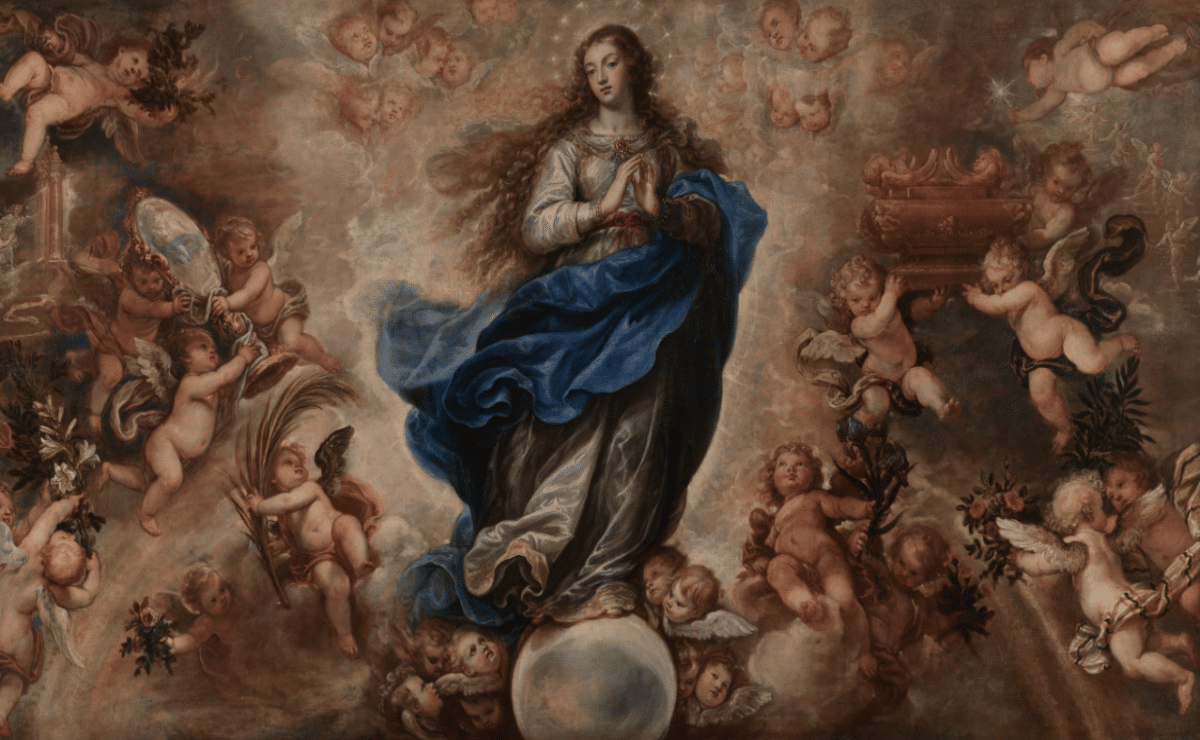The Immaculate Conception: Does it matter to the Catholic youth?

Image from Wikipedia
In the Catholic liturgical calendar, the birthday of the historical Jesus falls on December 25 because, exactly nine months earlier, on March 25, the day of the Annunciation, Jesus was conceived by the Holy Spirit in the womb of the Virgin Mary.
The Virgin Mary’s birthday falls on September 8, having been conceived in the womb of St. Anne exactly nine months before December 8, the solemnity of the Immaculate Conception.
What the Catholic tradition seems to explain is that we can celebrate Annunciation only because there is an Immaculate Conception and that we can celebrate Christmas only because there is a Nativity of Mary, for can a son be conceived without a mother or a son be born without a mother?
The First Coming was related to Mary’s personal decision.
The Annunciation, also known as the Incarnation of the Son of God or Pagkakatawang Tao ng Anak ng Diyos, is the most important event in the history of the world. The Son of the Living God, the Second Person of Blessed Trinity, who is destined from all eternity to come down to earth, became the Son of Man in Mary’s womb (see Galatians 4:4).
Our Catholic faith tells us that God’s invitation to save humankind is closely linked to the personal decision of one woman set apart from all the rest. “Blessed art thou among women” (Luke 1:42).
By her fiat (Luke 1:38), she conformed her will with the Divine will. Mary, a daughter of Adam, consented to become the theotokos, the Mother of God. Heaven rejoiced as hell trembled in fear when the “Word was made flesh and dwelt amongst us” (John 1:14).
Mary at Lourdes in 1858: “Je suis l’Immaculée Conception.”
Because she gave birth to the only blameless Man, Mary had to be without sin herself. Her Immaculate Conception is God’s unique way of preparing Mary to assume her role of the Motherhood of God.
More than nine centuries ago, St. Anselm wrote about Mary, saying: “All creatures were dead, as it were, useless for men to praise God Who made them. The world was corrupted and tainted by original sin. Now the whole universe rejoices with new loveliness. All creation has been restored to its splendor through a woman named Mary…who is immaculately conceived.”
Un pueblo amante de Maria
We feel proud as a people when the Holy Father told the world in 2018 that “the noble Church in the Philippines [that] now stands among the great Catholic nations in the entire world.” In the same manner, we are delighted that our nation is recognized worldwide as “a people in love of the Blessed Virgin Mary.”
The endless symphony of Marian names in the baptismal records, Marian processions and novenas, and the block rosary are among the favorite expressions of the Filipino devotion to Mary, Mother of God, once declared by the Catholic Bishops’ Conference of the Philippines (CBCP).
Visit the main islands of the Philippines, de Aparri hasta Jolo, and be prepared to discover that about 500 Catholic churches and chapels are dedicated to Mary in her various lovely titles, and, of these, her Immaculate Conception is the principal patroness of more than 100 parishes and cathedrals.
A few months before World War II, Pope Pius XII declared Mary under the title of the Immaculate Conception as the official patroness of the Philippines. In addition to the Philippines, the United States, Spain, Brazil and Korea have the Blessed Virgin Mary as their principal patroness, with the written approval coming from the Vatican.
In 2017, believe it or not, it was former Philippine President Rodrigo Duterte who signed House Bill No. 524, formally declaring that, in addition to being a Catholic holy day of obligation, December 8 is also a non-working official holiday in the country.
The hard question: Does it matter to the Catholic youth today?
Now, a reality check is imperative. How many of our young people of the “noble Church” know and understand the meaning of all these civil and religious proclamations regarding the Immaculate Conception?
In other words, does it matter to the ordinary Catholic on the streets that Mary was immaculately conceived in the womb of St. Anne? For this purpose, I made random calls and sent messages to former business management students who are Catholics, and many of them told me, maybe. Quizás. Quizás. Quizás. And I felt pain in my soul.
Some of them, now married, admitted that they are even confused about this dogma, unable to differentiate the Immaculate Conception or the conception of Mary in the womb of St. Anne, her mother, from the conception of Jesus Christ in the womb of Mary. Many of them confessed having failed in the holy obligation to observe this Marian solemnity for many years.
Is this related to the acknowledgement of their prophetic failure when our shepherds said that “We have not been effective enough in our catechesis about the Faith”? (CBCP Pastoral Letter of 2019).
I remember listening to one voice during the synodal consultations on the local level. It said that it is one thing to explain a Marian dogma, or any Catholic teaching, in homilies and catechism, and another to sow the seed of the Gospel in good soil and that seed bears much fruit.
Is Pope Francis’ call for dynamic, synodal and missionary discipleship a wake-up call and a trumpet blast against Catholic complacency?
Holy Mary, Mother of God
Pray for us sinners
Now and at the hour of our death. Amen!
José Mario Bautista Maximiano is the author of the book Church Reforms 3: The Synodal Legacy of Pope Francis (Claretian, 2025). Church Reforms 1 and Church Reforms 2 are available in Lazada and Shopee. Email: jomaximiano@gmail.com

